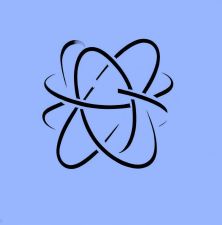
|
Random Tensors, from Quantum Gravity to Artificial Intelligence and Quantum Information
5-7 juil. 2023 Talence (France)
|
Titres et abstracts
Abstract : TBA
Abstract : TBA
Abstract : We define the computational task of detecting projectors in finite dimensional associative algebras with a combinatorial basis, labelled by representation theory data, using combinatorial central elements in the algebra. In the first example, the projectors belong to the centre of a symmetric group algebra and are labelled by Young diagrams with a fixed number of boxes n. We describe a quantum algorithm for the task based on quantum phase estimation (QPE) and obtain estimates of the complexity as a function of n. We compare to a classical algorithm related to the projector identification problem by the AdS/CFT correspondence. This gives a concrete proof of concept for classical/quantum comparisons of the complexity of a detection task, based in holographic correspondences. A second example involves projectors labelled by triples of Young diagrams, all having n boxes, with non-vanishing Kronecker coefficient. The task takes as input the projector, and consists of identifying the triple of Young diagrams. In both of the above cases the standard QPE complexities are polynomial in n. A third example of quantum projector detection involves projectors labelled by a triple of Young diagrams, with m,n and m+n boxes respectively, such that the associated Littlewood-Richardson coefficient is non-zero. The projector detection task is to identify the triple of Young diagrams associated with the projector which is given as input. This is motivated by a two-matrix model, related via the AdS/CFT correspondence, to systems of strings attached to giant gravitons. The QPE complexity in this case is polynomial in m and n.
Abstract : Random Tensor Network (RTNs) are random quantum states associated to decorated graphs, which provide a computable platform to investigate generic entanglement properties of quantum many-body systems. More precisely, a global state is obtained by stitching together local pieces of data: to each edge is associated a bipartite entangled state, to each vertex an independent random tensor, and those are glued together following the combinatorics of the graph. The entanglement structure of a RTN can be understood analytically in some detail, and is found to reproduce key expected features of quantum gravity states in the context of holography. This is due to the fact that the computation of the Rényi-$n$ entropy of some subregion can be reduced to the evaluation of the partition function of a classical 'spin' model on the network (where the 'spin' associated to each vertex is an element of the symmetric group $S_n$).
In a RTN, the tensor associated to a given vertex is usually averaged over the whole unitary group of the corresponding Hilbert space, with respect to the Haar measure. In this talk, I will investigate what happens when one averages over the much smaller subgroup of Local Unitary (LU) transformations. As we will discuss, this situation can be analyzed with the help of Weingarten calculus and colored diagrammatics. Interestingly, it allows for richer entanglement structures which can be mapped to suitably modified classical spin models.
Abstract : Symmetries in quantum theory give rise to projective representations of groups, as is well illustrated in the case of magnetic translations. We will show that strings moving a background 3-form invariant under a group give rise to a an action fo the twisted Drinfeld double. Moreover, the corresponding magnetic amplitude provide a ground state of a deformed version of the Kitaev model.
Abstract : We consider the 0-dimensional quartic O(N) vector model and present a complete study of the partition function Z(g,N) and its logarithm, the free energy W(g,N), seen as functions of the coupling g on a Riemann surface. Using constructive field theory techniques we prove that both Z(g,N) and W(g,N) are Borel summable functions along all the rays in the cut complex plane Cπ=C∖R−. We recover the transseries expansion of Z(g,N) using the intermediate field representation. We furthermore study the small-N expansions of Z(g,N) and W(g,N). For any g=|g|eıφ on the sector of the Riemann surface with |φ|<3π/2, the small-N expansion of Z(g,N) has infinite radius of convergence in N while the expansion of W(g,N) has a finite radius of convergence in N for g in a subdomain of the same sector. The Taylor coefficients of these expansions, Zn(g) and Wn(g), exhibit analytic properties similar to Z(g,N) and W(g,N) and have transseries expansions. The transseries expansion of Zn(g) is readily accessible: much like Z(g,N), for any n, Zn(g) has a zero- and a one-instanton contribution. The transseries of Wn(g) is obtained using Möebius inversion and summing these transseries yields the transseries expansion of W(g,N). The transseries of Wn(g) and W(g,N) are markedly different: while W(g,N) displays contributions from arbitrarily many multi-instantons, Wn(g) exhibits contributions of only up to n-instanton sectors.
Abstract : In Gurau and Keppler 2022 (arXiv:2207.01993), a relation between orthogonal and symplectic tensor models with quartic interactions was proven. In this paper, we provide an alternative proof that extends to polynomial interactions of arbitrary order. We consider tensor models of order D with no symmetry under permutation of the indices that transform in the tensor product of D fundamental representations of O(N) and Sp(N). We explicitly show that the models obey the N to -N duality graph by graph in perturbation theory.
Abstract : TBA |

